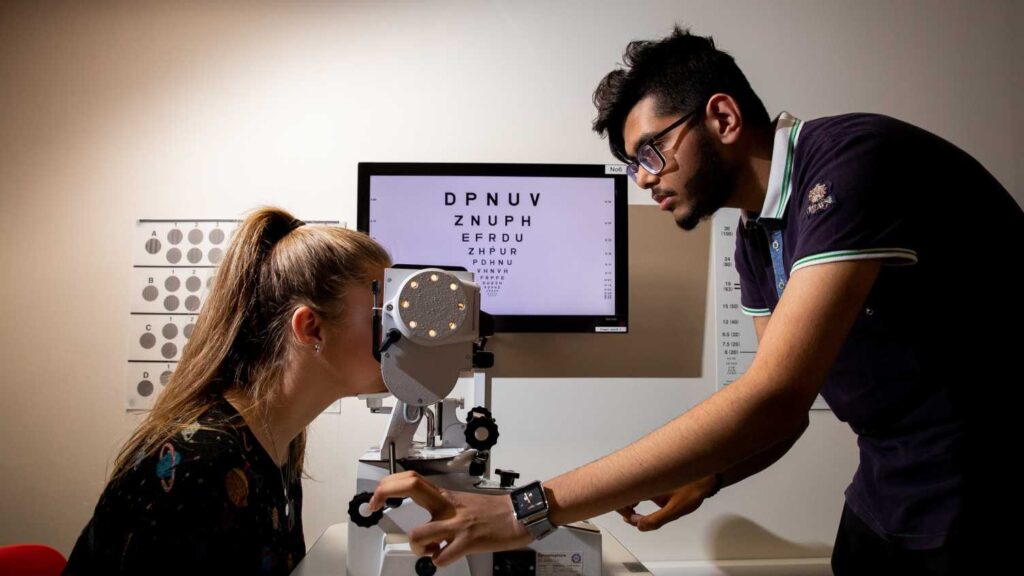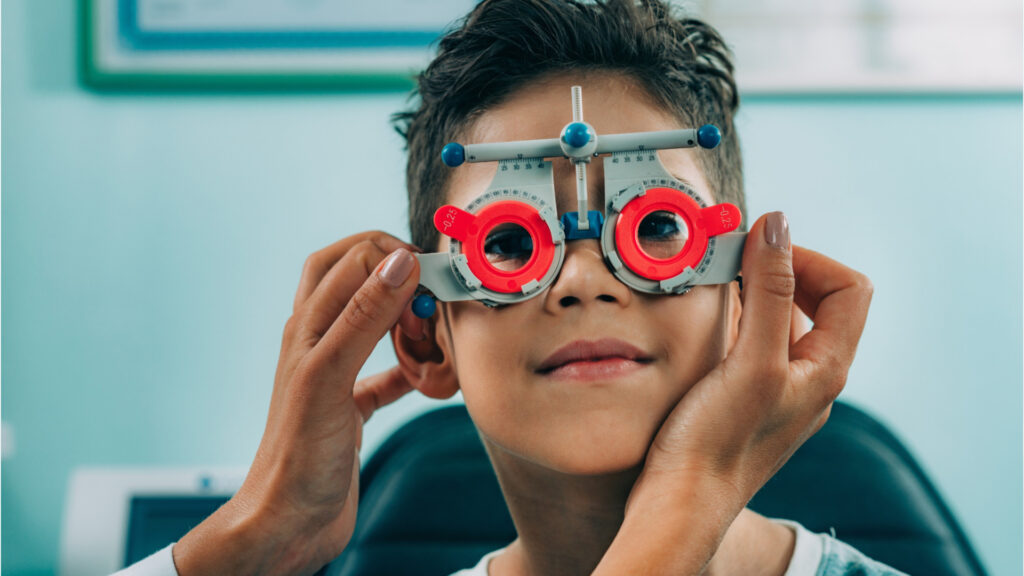When it comes to the list of eye care professionals for vision therapy, orthoptists are definitely one of the jobs at the top. They help people of all ages adapt, correct, and manage binocular vision issues including strabismus, amblyopia, double vision, and other eye movement disorders, along with ophthalmologists or optometrists. They have to perform assessment tests to detect any problems in binocular vision and ocular motility, which can be related to eye muscles or neurology disorders. Orthoptists also develop non-surgical treatment options with guidance from ophthalmologists or other professionals, or work with ophthalmologists on surgical treatments and surgical after care.
Orthoptists often see young children, because binocular vision disorders usually occur at a younger age and early treatment can lead to better results. Children with binocular vision disorders, even minor ones, have trouble with school, sports, and everyday activities. Orthoptists help young patients with their eye problems to improve vision, and help mentally by correcting these issues that have a strain on their confidence. For adults and the elderly, binocular vision problems can occur after head injuries, trauma, or disorders of the body. Orthoptists co-manage these older patients, along with other professionals, to help them recover their vision or adapt to visual changes.
Orthoptists also assist with patient testing in visual fields and other common tests, help with explanations to patients, and perform other clinical duties. Some orthoptists work with patients in other fields and use different assessment techniques to aide in patient care. Low vision, glaucoma, cataracts, biometry, fundus photography, and visual electrodiagnosis are areas that orthoptists may be exposed to, depending on the specific job.

A Career in Orthoptics
For individuals interested in a career in orthoptics, to be successful in this position a candidate needs to know what to expect on the job. Orthoptists will see patients of all ages, but mainly young children with binocular vision disorders. Some will have lazy eyes, crossed eyes, eyes that face different directions, slight double vision, or another issue. Orthoptists will also help older patients who have been struck with vision disorders due to some reason and maybe frustrated, scared, and disoriented. A good orthoptist will be able to handle patients in all these situations, and their families during the whole process as they become the liaison between the patients and the ophthalmologist, educational psychologist, pediatric ophthalmologist, or other professional involved. Orthoptists should be able to communicate well with all professionals involved in caring for the patient, the patients themselves, and the family of patients.
A career as an orthoptist can be really satisfying by helping patients with their vision disorders. This is evident by seeing a young patient improving during follow-up visits, and from comments from parents, or from adult patients recovering from double vision after a traumatic event. The outlook on the career is also outstanding because there is higher demand than qualified personnel. This is due to a limited amount of accredited schools that admit a very limited amount of students every year.

Certification and Education
There are a limited amount of orthoptic training programs, with only 11 in the United States, 4 in Canada and a few more internationally. The training programs in the US are 24 months in length, require a bachelor’s degree, and consist of didactic and strong clinical experience. The cost of the training will range from $2,000 to $6,000. Each school has its own specific admission requirements, and candidates should view the Orthoptic Programs section for more detailed information on each school. After completion of the training program, orthoptists can become certified by passing a national exam, consisting of written, oral, and practical sections.
Orthoptist Salary and Work Area
Orthoptists are specialty visual therapists, and can be used by many facilities that need an extra person to be a liaison between doctors and patients, thus allotting more time for doctors to perform other duties. They can work in hospitals, outpatient care centers, ophthalmologist offices, medical centers and other community health facilities. Orthoptists can also work in education fields as teachers or do research work. Some orthoptists take up consulting work and travel to different places where they are needed or have their own practice. According to the American Medical Association in a 2000 survey, the starting salaries were $35,000 to $42,000, the average salaries were $45,000 to $50,000, and the higher end salaries reached $80,000.
More to read: Benefits of Bladeless Laser Eye Surgery

